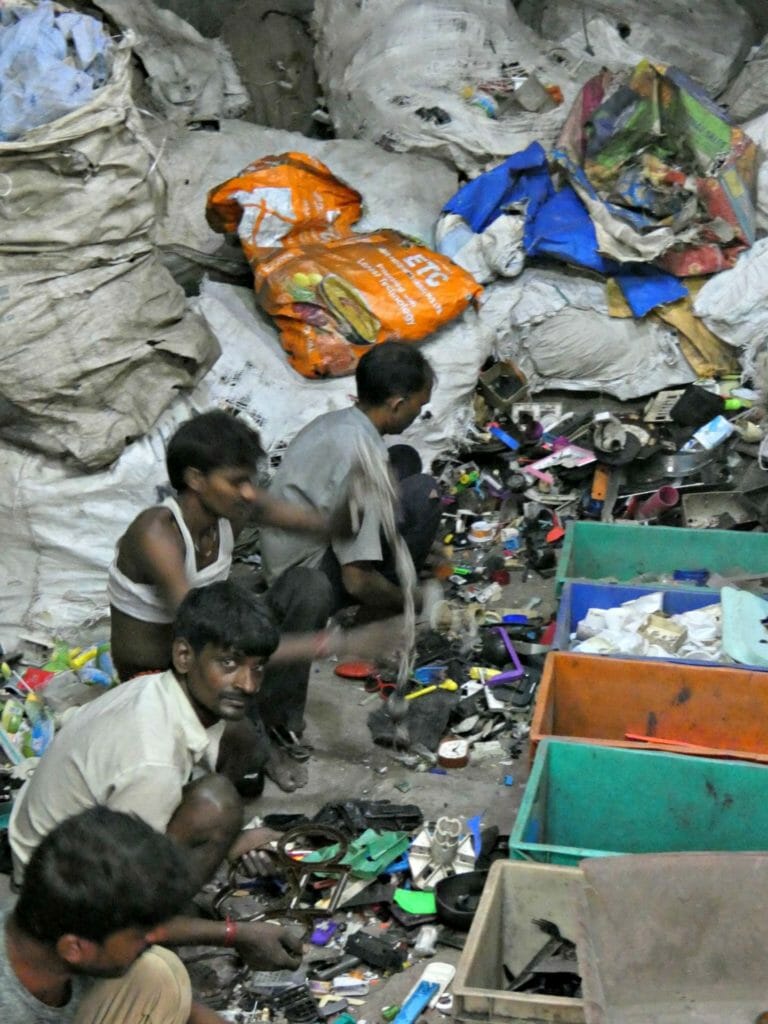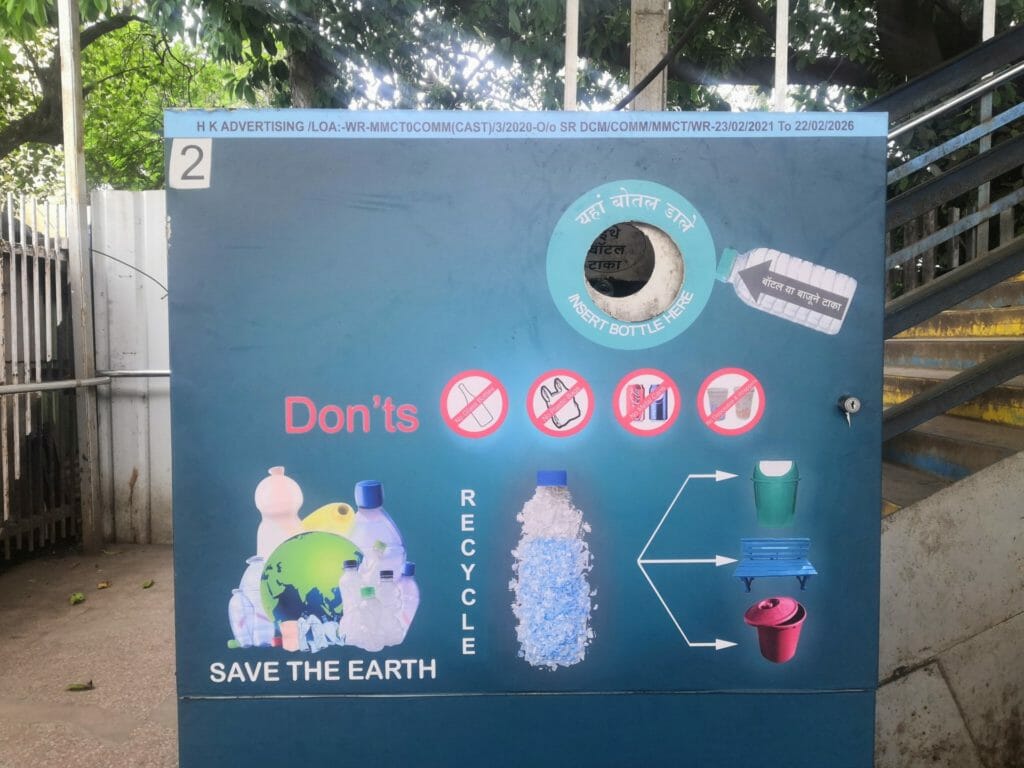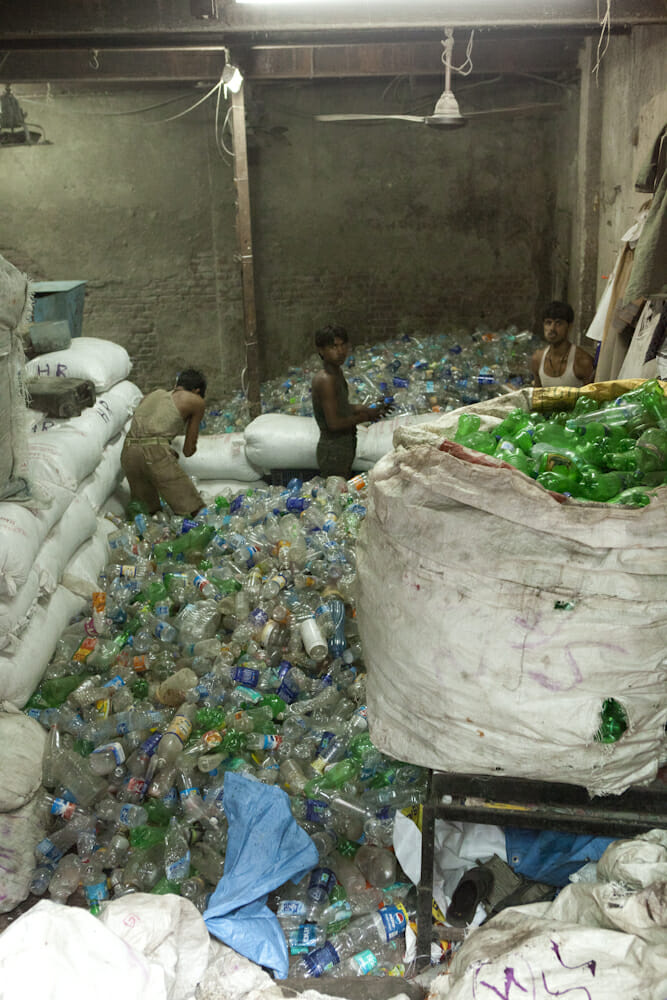Are you a Mumbaikar practising waste segregation by separating your waste into dry and wet waste? Perhaps you even go a step ahead and dutifully put aside your sanitary, hazardous and e-waste. You might have made it a habit of handing over the compartmentalised waste to the housekeeping staff of your housing society every morning like clockwork.
But what happens after you shut the door? While your wet waste continues on towards its intended destination, the landfill, does your segregated dry waste successfully make it to recycling?
Taking plastic as an indicator, 59% of plastic waste generated in Maharashtra is diverted towards recycling to end up in roads, fabric, fuel, etc. But this is not the full picture. The pipeline to recycling is not a streamlined journey and it is littered with informal practices.
The extent of waste segregation in Mumbai
In recent years, the Brihanmumbai Municipal Corporation (BMC) has ramped up tactics to increase waste segregation at source in the city. Starting in 2017, it ordered all bulk waste generators, like housing societies and commercial establishments producing over 100 kg of waste, to handle their own waste by segregating and composting the wet waste within their premises or outsourcing it.
At the same time, it is offering a 5% property tax rebate to housing societies for waste segregation – although many housing societies claim this is yet to follow through.
Read more: Property tax rebate for waste management by housing societies: Did BMC keep its promise?
According to the BMC’s Environmental Status Reports (ESR), waste segregation rose steadily from 2016-17 to 2018-19, from 53% to 83%. Post-2019, however, the degree has not seen any improvement; the year 2019-20 took a minor dip to 82%, and then to 81% in 2020-21. (The same report also mentions the level of segregation to be at 86%.)
But this impressive extent of segregation does not directly reflect segregation at its source. The Praja report on civic issues in 2020-21 attributes the jump in the numbers to “the establishment of 46 dry waste segregation centres.” There, dry waste is separated and sorted into categories, only after which the material can be sent for recycling. Segregation is outsourced to the dry waste segregation centres, established by the BMC but run entirely by waste-picker associations.

From your home to the dry waste segregation centre
The 46 dry waste segregation centres are spread unevenly across the 24 wards of the city. They have an accumulated fleet of 96 tempos, tasked with collecting segregated dry waste from houses in their area. While the physical land and vehicles are provided by the BMC, the responsibility of waste collection and the centre is given to an NGO involved in waste management.
“Housing societies need to find their dry waste segregation centre, schedule for collection, and give their dry waste only to them,” says Kedar Sohoni, founder of Green Communities Foundation, an NGO working in waste management and sustainability. “But they don’t seem to be concerned until the BMC fines them and doesn’t pick up their garbage.”
The onus here, of contacting the dry waste centre and putting out the dry waste at a scheduled time, lies on the housing society. The collection is the responsibility of the respective NGO.
In the absence of this, however, the separated dry and wet waste is likely to be mixed together when the BMC’s wet waste compactor arrives for collection. After all, the contractors for garbage collection are paid according to the quantity of waste they transport. Some compactors have separate chambers for dry waste, but Kedar mentions these are hardly used for their purpose. And even if kept apart, their destination is the landfill.

Gaps in infrastructure
“We have only two vehicles for collecting dry waste from the whole ward,” says Sunita Patil from Stree Mukti Sanghatana, an NGO working with women waste pickers. It runs the dry waste segregation centre at Chembur, sending a vehicle for collection in each area every alternate day. “But people aren’t habituated to storing their waste, so the dry waste gets picked up by the wet waste compactor.”
It’s not hard to see why such a problem would arise. The strength of the vehicles for dry waste collection is nowhere near that of the wet waste compactors, which are over 1,400 in number.
Space is similarly a problem. “Most of the centres are very small, at 1,000 to 2,000 square feet,” says Kedar. Even the largest – at around 10,000 feet – serves the whole ward, not only sorting the waste but storing it till it’s enough to pack a truck of a single material for recycling.
Combined, the dry waste segregation centres have a daily intake of 188 tonnes. Comparatively, the total municipal solid waste (MSW) collection in the city clocks in at 6,300 – 6,500 tonnes per day.
The amount of segregated dry waste collected and transported pales in comparison. By the BMC’s own estimates, dry waste generated in the city is approximately 27% of MSW: that translates to a minimum of 1,700 tonnes every day. What happens to the other 1,500 tonnes?
Read more: Explainer: Segregating waste manually to minimise the burden on landfills
The curious case of the reverse vending recycling machines
A more concentrated attempt at segregation can be seen in targeted recycling machines aimed at the general public, like reverse vending machines (RVM). These machines accept empty plastic bottles from people and either crush or shred them on the spot, often offering a monetary reward, like a coupon, in return. Universally welcomed, the machines have spread far and wide across the globe; from the recycling industry-heavy state of Gujarat to the environmentally-conscious Norway. Mumbai is no different.
“It’s a very easy way of doing CSR,” says a representative from Recycle India Foundation (RIF), an NGO which has a few RVMs in popular spots like malls, tourist spots, etc in Mumbai. “The companies have the funds. We set up the machine for companies and take care of operations and maintenance. All they need is to set up the machine, and take care of operations and maintenance.”
Government authorities, too, have been largely receptive to the RVMs. While not going so far as to set them up themselves, the railways have provided space for them at many stations in Mumbai. When the Maharashtra government exempted under 500ml plastic bottles from the plastic ban in 2018, it recommended the machines as a part of extended producer responsibilities (EPR) instead.
But these machines have a fatal flaw, says Sunita.
“When you put a plastic bottle in the machine, it crushes plastics of different categories together. A PET plastic bottle is not entirely PET. It has a label, a cap and a ring,” she says. The plastic collected, as a result, diminishes in quality and value, and ends up fit only for the landfill.

A channel for awareness
Sunita’s claims are not unfounded. Recyclers have complained about the shredder machines, says Sarah Tantray of Wild West Innovations, which has over 60 RVMs it calls ‘ReBots’ in Mumbai. Manual segregation is the primary mode of segregation in India, and those heterogeneous parts of the bottles would typically be detached and sent for recycling separately.
But all is not lost. The feedback led the company to incorporate compressor technology in their RVMs, which flatten the bottles, so that separation is easier at a later stage. However, the type of machine installed depends on the client’s request.
The representative from RIF adds that labels are increasingly being made of PET instead of PVC, which is known for being difficult to automatically separate and recycle. There is also a separate slot for caps in their machines, although Sarah mentions that does not work in busy places.
Yet the machines reveal a crucial reality of waste segregation at source: people only do it for the incentive.
“There are a handful of people that are concerned about the environment,” says Sarah. “But the main reason draw for people is the coupons. Some even save up their bottles for when they want to buy groceries from Sahakari Bhandar. Otherwise, they would put them in the bin.”

Waste pickers play an important role
Ultimately, it is waste pickers that do most of the heavy lifting in the journey towards recycling. They are present at every step of the waste disposal process, rescuing recyclable material for the sake of their livelihoods. They are there right at the beginning – at the doorstep.
“Before the BMC waste vehicles reach the bins to collect the waste, the local waste pickers scoop through the mixed waste and take out the valuable recyclable material they can,” says Sunita.
The workers on the BMC wet waste compactors also keep an eye out for stray finds, storing them in a plastic bag hanging atop the truck. “They might take out some recyclables like PET bottles or metal, for their own interests,” says Kedar.
Waste pickers are also then present at the later and far more toxic stages of waste transportation. They go through the mixed waste for anything salvageable at the refuse transfer stations at Gorai, Mahalaxmi and Kurla. Wet and mixed waste from all parts of the city meet here and are transferred to bigger trucks before going to the dumping ground.
And then, they are present at the dumping grounds – at Kanjurmarg and Deonar.
“Thousands of people work in the most hazardous of conditions to separate the mixed,” says Kedar. “Yes, they do recover stuff at the dumping ground, but at the cost of their life expectancies. It just happens because they have no other option.”
How to ensure your waste is recycled:
- The first step is to start segregating your waste into wet, dry and hazardous segments
- Ensure your building or housing society also segregates their waste
- To ensure your dry and hazardous waste is reaching the dry waste segregation centre, you must contact your nearest dry waste segregation centre from this list, or the BMC office of your ward to find out the dry waste segregation centre assigned to area. Ensure your collective dry waste is then given to the dry waste vehicle when it makes its rounds in your area.
- An at-home compost pot can get you started on your composting journey, taking care of your wet waste with the least environmental impact. This guide will show you the way.
- As a housing society, you can also arrange for your wet waste to be composted within your premises by setting up a compost pit or machine, or outsourcing your wet waste to a composting service.